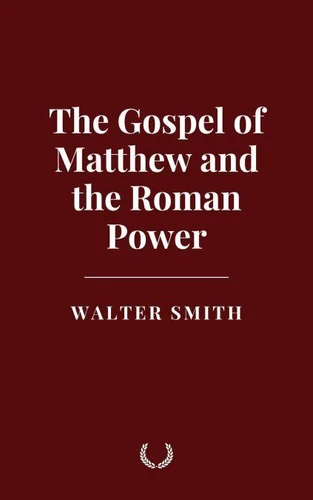The Gospel of Matthew and the Roman Power
Par :Formats :
Disponible dans votre compte client Decitre ou Furet du Nord dès validation de votre commande. Le format ePub est :
- Compatible avec une lecture sur My Vivlio (smartphone, tablette, ordinateur)
- Compatible avec une lecture sur liseuses Vivlio
- Pour les liseuses autres que Vivlio, vous devez utiliser le logiciel Adobe Digital Edition. Non compatible avec la lecture sur les liseuses Kindle, Remarkable et Sony
 , qui est-ce ?
, qui est-ce ?Notre partenaire de plateforme de lecture numérique où vous retrouverez l'ensemble de vos ebooks gratuitement
Pour en savoir plus sur nos ebooks, consultez notre aide en ligne ici
- FormatePub
- ISBN8230828150
- EAN9798230828150
- Date de parution13/01/2025
- Protection num.pas de protection
- Infos supplémentairesepub
- ÉditeurIndependently Published
Résumé
The Gospel of Matthew emerges from a turbulent intersection of faith, politics, and imperial dominance. Written in the late first century, most scholars place its composition between 70 and 90 CE, a period marked by the aftershocks of the Jewish-Roman War (66-73 CE). This devastating conflict, culminating in the destruction of the Jerusalem Temple in 70 CE, left an indelible mark on Jewish identity and religious practice.
For the Jewish community-and for the early Christians who were inextricably linked to that community-this was not merely a military defeat but a theological crisis. In this historical crucible, the Gospel of Matthew takes shape, presenting Jesus of Nazareth as the true fulfillment of Jewish hopes and the embodiment of divine authority in stark contrast to the might of Rome.
For the Jewish community-and for the early Christians who were inextricably linked to that community-this was not merely a military defeat but a theological crisis. In this historical crucible, the Gospel of Matthew takes shape, presenting Jesus of Nazareth as the true fulfillment of Jewish hopes and the embodiment of divine authority in stark contrast to the might of Rome.
The Gospel of Matthew emerges from a turbulent intersection of faith, politics, and imperial dominance. Written in the late first century, most scholars place its composition between 70 and 90 CE, a period marked by the aftershocks of the Jewish-Roman War (66-73 CE). This devastating conflict, culminating in the destruction of the Jerusalem Temple in 70 CE, left an indelible mark on Jewish identity and religious practice.
For the Jewish community-and for the early Christians who were inextricably linked to that community-this was not merely a military defeat but a theological crisis. In this historical crucible, the Gospel of Matthew takes shape, presenting Jesus of Nazareth as the true fulfillment of Jewish hopes and the embodiment of divine authority in stark contrast to the might of Rome.
For the Jewish community-and for the early Christians who were inextricably linked to that community-this was not merely a military defeat but a theological crisis. In this historical crucible, the Gospel of Matthew takes shape, presenting Jesus of Nazareth as the true fulfillment of Jewish hopes and the embodiment of divine authority in stark contrast to the might of Rome.























